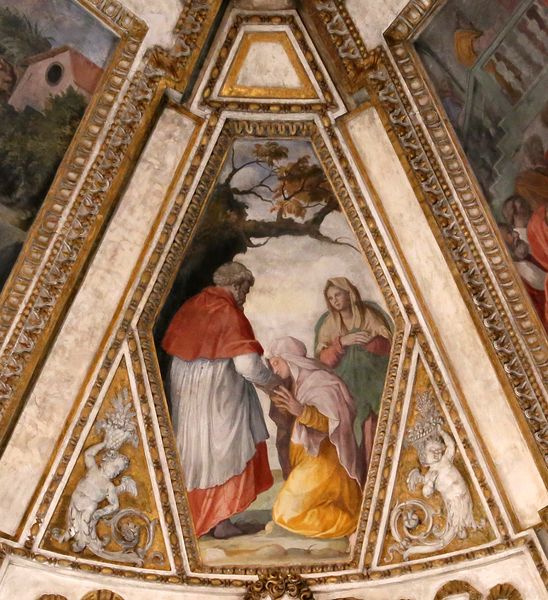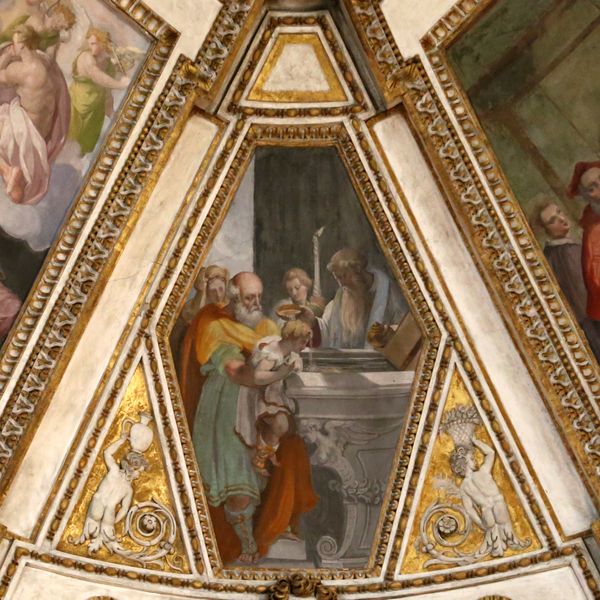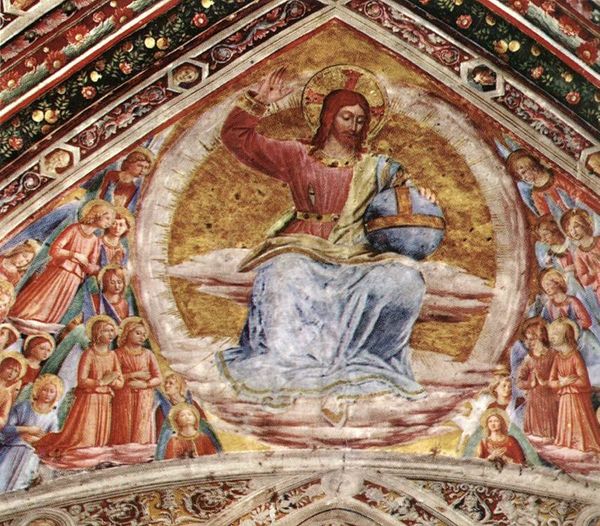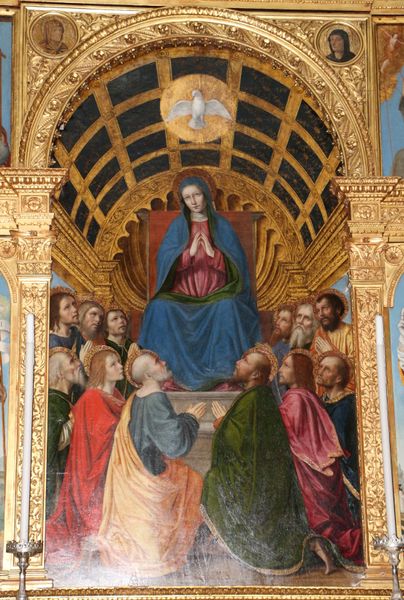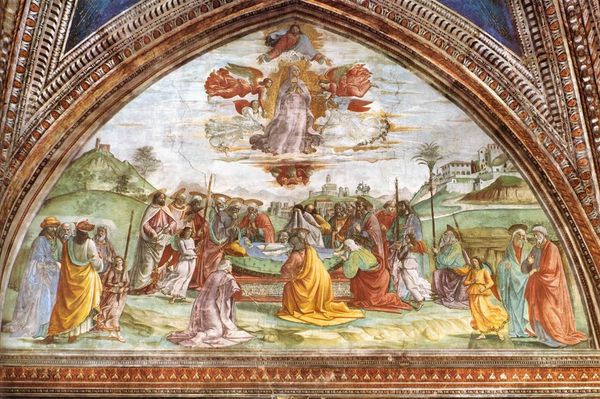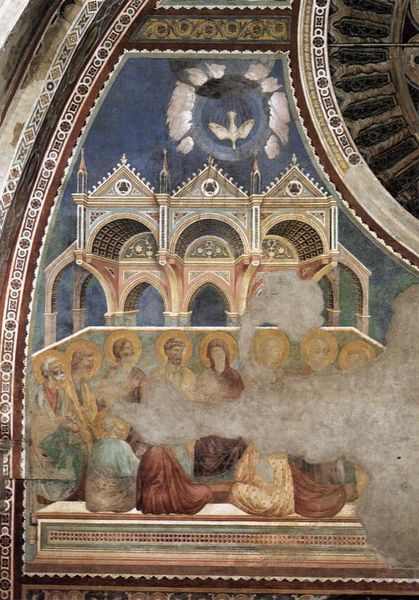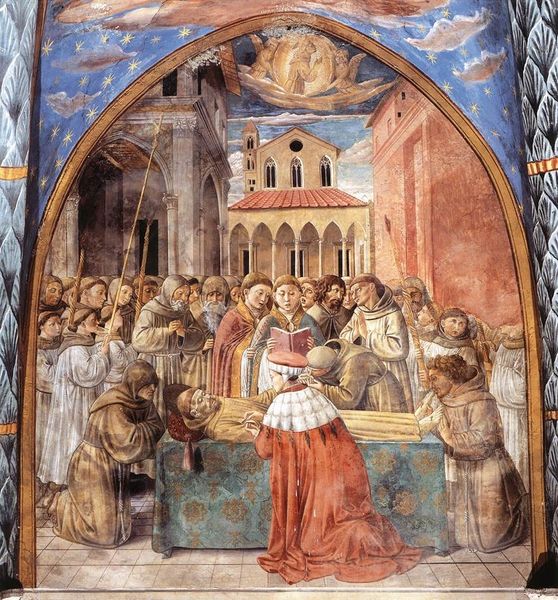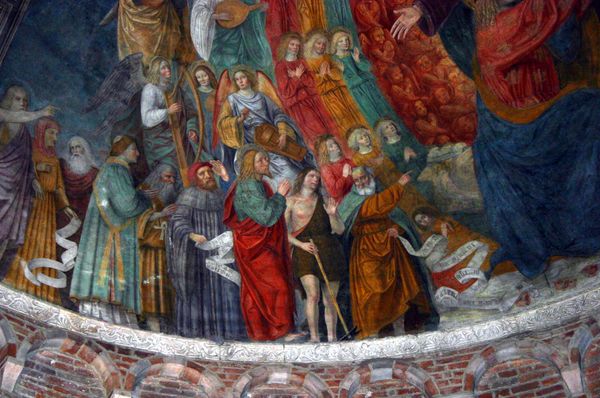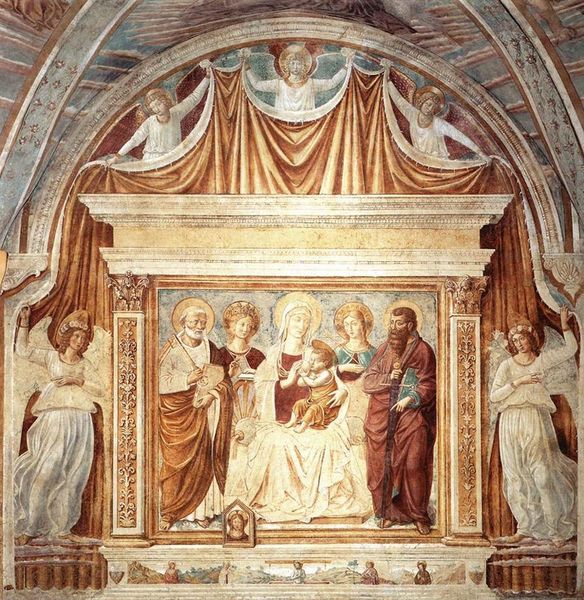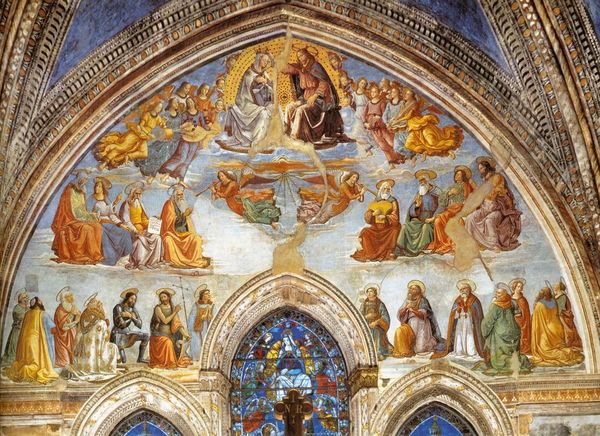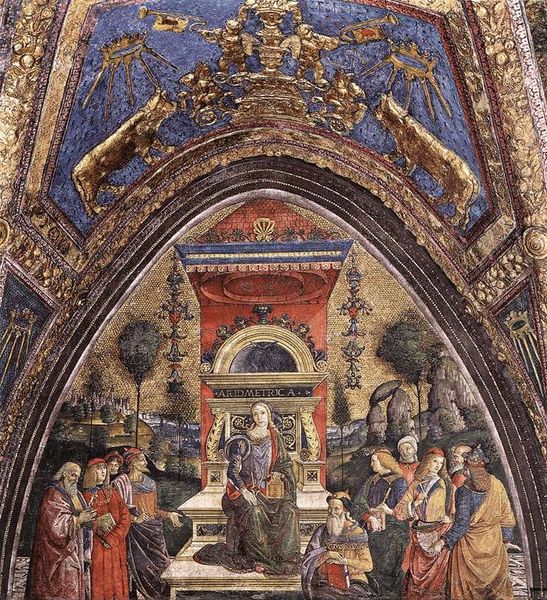
painting, fresco
#
portrait
#
high-renaissance
#
allegory
#
painting
#
prophet
#
figuration
#
fresco
#
group-portraits
#
christianity
#
line
#
history-painting
#
italian-renaissance
#
christ
Copyright: Public domain
Curator: Before us, we have "Prophets," a fresco painting by Fra Angelico, created around 1447. You can find this artwork within the Duomo di Orvieto, in Orvieto, Italy. Editor: My immediate feeling is one of ethereal calm. The soft colors, especially the prevalence of pinks and blues, contribute to this serene, almost dreamlike quality. They seem to be floating. Curator: They certainly do. Now, in considering the socio-political environment in which "Prophets" was created, we're looking at a period of intense religious and political negotiation within Italy, the figures holding books reflect access to written texts within specific educated circles and the legacy they passed down through the Church. Editor: Yes, books or scrolls are the ubiquitous accoutrements, a symbol of their authority and learnedness. More specifically, though, I'm drawn to the subtle nuances within each figure's presentation, their haloes and drapery—visual shorthand that allowed contemporary viewers to understand them immediately, and even to prompt devotion. The message is clear. Curator: Absolutely. Beyond simply communicating doctrine, how might we think about Fra Angelico's piece speaking to the hierarchies of power that existed then and, potentially, even how they are sustained in our own era? Notice also, the intentional lack of diversity amongst the individuals portrayed. Editor: An astute observation, it can definitely be used to analyze gender inequality in a religious historical context. Looking at them together now, each holding or reading, reminds me how integral textual interpretation and authorized readership was for cementing influence, and, inevitably, for promoting exclusion. Curator: Indeed. And yet, consider the act of representing them. Art, even religious art, offers a space where these figures, though rendered traditionally, are also subject to the artist’s interpretation and, now, ours. What should the future look like, knowing the historical context? Editor: Knowing how intertwined these historical and theoretical underpinnings were can open us up to more equitable and inclusive iconographies in the present. Thank you. Curator: It was a great conversation. I think so too.
Comments
No comments
Be the first to comment and join the conversation on the ultimate creative platform.
